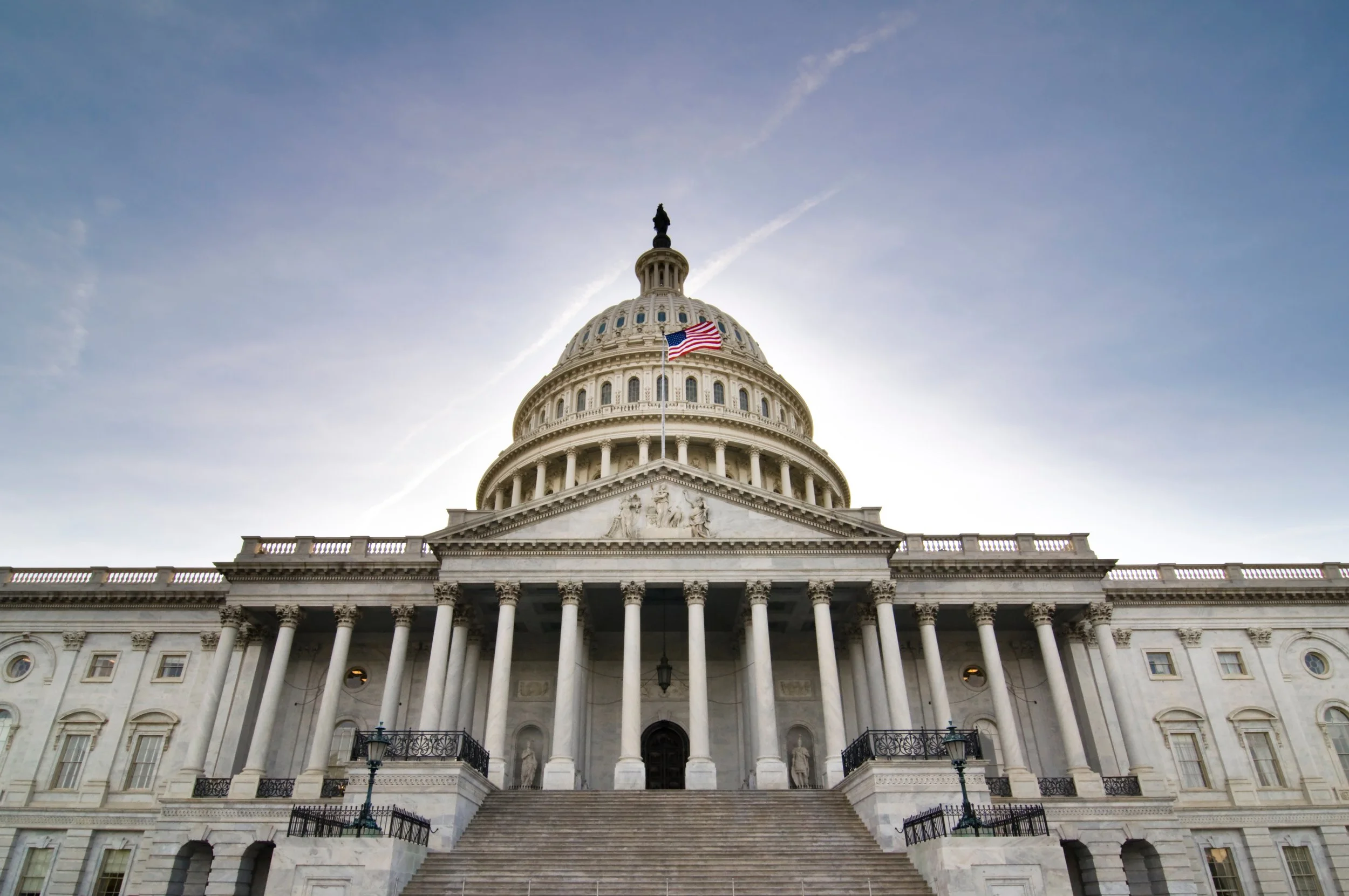…Time for the Oklahoma legislature to follow Trump's lead
‘This Isn’t Partisan’: AHCA’s Clif Porter Warns of Long-Term Challenges for Nursing Homes Amid Wins”
By Zahida Siddiqi | October 17, 2025
Clif Porter, president and CEO of the largest advocacy group for nursing homes in America, said that among the year’s major wins for the sector – such as the freeze on provider taxes – were hard-won battles, but certainly a welcome development amid looming challenges and the current economic climate.
In an exclusive interview with Skilled Nursing News ahead of the American Health Care Association and National Center for Assisted Living’s (AHCA/NCAL) annual convention in Las Vegas, Porter called the One Big Beautiful Bill Act’s (OBBBA) provider tax freeze for nursing homes a historic achievement.
“We actually were the only sector in all of health care that was insulated from that policy by having provider taxes frozen,” he said, crediting AHCA/NCAL’s work behind the scenes in convincing lawmakers that Medicaid already underfunds nursing home care and further cuts would harm patients. “[T]hat result took a lot of work on our team’s part to get policymakers to really understand ‘the why.’”
Despite that win, Porter warned of long-term challenges for skilled nursing facilities (SNFs), particularly at the state level.
Medicaid pressures tend to worsen during economic downturns, he said, and OBBBA’s financial impact could grow in three years. Given that, AHCA is prioritizing support for states like Idaho and North Carolina, where proposed Medicaid cuts are already emerging.
“This isn’t partisan,” Porter said, noting that both red and blue states face risks.
On the federal government shutdown, Porter said the impact has been minimal so far but could grow if it drags on.
He also flagged tariffs as a top concern for suppliers to nursing home providers, with rising costs likely to hit providers.
“You’ve got spiking inflation, a cooling economy so you need more [Medicaid] increases to keep pace with that. Yet there’s less resources to do it. That’s where the friction is.”
Porter cited the repeal of the federal staffing mandate as another major win for his organization. “Every branch affirmed our position that we were right,” he said.
And while proud of these victories, Porter stressed the need for continued advocacy and support at both the state and national levels as economic and policy pressures mount.
The annual convention for AHCA/NCAL, which represents more than 15,000 non-profit skilled nursing centers and long-term care facilities, kicks off this Sunday.
Editor’s note: This is the second part of SNN’s interview with Porter. The the first story ran earlier in the week.
The following conversation has been edited for length and clarity.
SNN: How have the new administration’s policy agenda and the One Big Beautiful Bill Act impacted the industry in 2025?
Porter: With OBBBA, there were a variety of implications, but most of the impact was around Medicaid. There were no real regulatory implications with the bill. But for the first time in history, or at least the time I’ve been around, we actually were the only sector in all of health care that was insulated from a policy by having provider taxes frozen, whereas everyone else has had to dial down. So we were really proud of that result that took a lot of work on our team’s part to get policymakers to really understand ‘the why’ behind that. And the main reason we got policymakers to understand that is by convincing them that Medicaid underfunds care to nursing homes, and so if you cut provider taxes, that’s further compromising that deficit, and that’s not good for patients.And thank goodness we got support.
We’ve still got a lot of issues ahead of us. Medicaid is always a challenge. Cyclically speaking, when the economy cools off, Medicaid becomes a sore point in the states because it’s just less money to pay for things. So that’s just a normal sort of challenge that I’ve seen a few of these cycles in my career, and we’re coming up on another one, so that is the main driver.
And then, we have the consequences of OBBBA – particularly three years from now – which will also exacerbate some of those issues. So we got a lot of work to do, but I think a lot of it moves much more locally to the state level.
Turning to the state-level impact of these Medicaid cuts, are there certain states that you’re watching more closely than others? Or, are you just looking ahead to the future on a national level?
It’s both. We’re providing additional support to help solve some of the unique problems that each state may have.
Every state in America is different. Every economy in the state is driven by different metrics. If you go to Oklahoma, it’s all about oil revenue, right? So if the oil wells are rolling and the prices are good, Oklahoma is usually going to be all right regardless. And if there’s a problem with oil, then they could be in a massive Medicaid crisis. And then you go to another state, and it’s a different issue. So again, it varies state by state. Obviously, the states that expanded Medicaid did not have any reductions to their [Medicaid reimbursement] so they’re in a less vulnerable position. We’re not ignoring them, but they’re definitely in a better starting position than the rest.
What states are on your radar as top concerns for Medicaid cuts?
We’ve not ranked them to be honest with you. Obviously, the cuts that were announced in Idaho and North Carolina are sort of the immediate focus and we’re offering help there. These states are the ones that sort of first stepped out with some proposals that are deleterious, to say the least, so we are really focused on those two. Now, there are other states like New York, as an example, that have a lot of risk just based on some of the structure that they have as it relates to how their Medicaid program is funded. There are other states, both red and blue … so this isn’t partisan. We’ve got some red states that are equally, if not in some cases, more significantly impacted. We’re going to continue to support those states and obviously focus on them, and think about ways where we can nationally help address some of the concerns, particularly with the red states with this administration, and to make sure that they know what’s going on, how it’s impacting their constituencies there, and using that maybe as a lever to help get relief when the time comes.
Is the government shutdown having a tangible impact on SNFs?
Not a lot of immediate impacts at the moment, but the longer it goes, the higher the risk of it having impact. Again, there’s been a significant reduction in workforce with the HHS. Lots of jobs have been impacted there. We’re just not clear yet how that impacts us. But, you know, we’re not Pollyannish, so the short answer is, not yet, but we’re watching it very, very, closely.
There’s been elimination of [government] jobs since the shutdown … We’re just hopeful that it’s not significant, but you just don’t know how that ripples back to our operators.
In other government actions, have higher tariffs hit the SNF pocketbook yet?
The tariffs definitely have had an impact, particularly on our suppliers. I spent some time last week with one of our major suppliers, and the tariff issue is their number one issue, and that is going to cut through to the purchaser, which is us.
And, I think that inflation is going to continue to grow higher over time, and that’s going to be in the face of an environment with a cooling economy. You’ve got spiking inflation, a cooling economy so you need more [Medicaid] increases to keep pace with that. Yet, there’s less resources to do it. That’s where the friction is, and that’s what makes all of our lives that much more difficult. So a lot of inflation relates to tariffs.
To end on a more positive note, what are some of AHCA/NCAL’s big wins from this past year under your leadership?
The [repeal of the] staffing mandate was a hallmark win. If you think about it, we got validation of our position from every sphere of government, the courts too, as you referenced, the legislature when it comes to the moratorium, with the administration actually repealing the rule in its entirety. So every branch affirmed our position that we were right. That feels good, because we knew we were right, and ultimately we won on that issue.
The provider tax freeze in the OBBBA was a milestone, allowing actual insulation to our long-term inflation. No other space in health care, not hospitals, no one, got insulation from provider tax cuts other than SNFs. That’s never happened before in history. So we’re super proud of that as well. It doesn’t solve the problem completely, but we’re very proud of that result.
So those are a couple things, and I’m hopeful that as we rack up more wins – it’ll be on the regulatory front, and I will be in a position over the next 12 months to be able to have a lot more to report to you on that as well.










